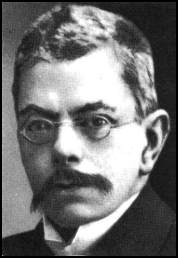
 |
Pieter Zeeman (1865-1943) Dutch Physicist born in Amsterdam. He makes his studies at the University of Leyden, where he will teach the physique of 1897 has 1900, date on which he is named professor at the university of Amsterdam. From 1908 it directs the Institute of Physics of this same city. In 1896 it discovers the Zeeman effect, confirming in experiments the predictions of its Master H. A. Lorentz and thus bringing a proof moreover in favour of the electromagnetic theory of the light. For this work, Lorentz and Zeeman, receive the first Nobel Prize of Physics in 1902. |
|
Pieter Zeeman
|
|
Many metal lines of the solar spectrum appear, in the
spots, widened or broken up into several lines.
E and m are respectively the load and the mass of the
electron. |
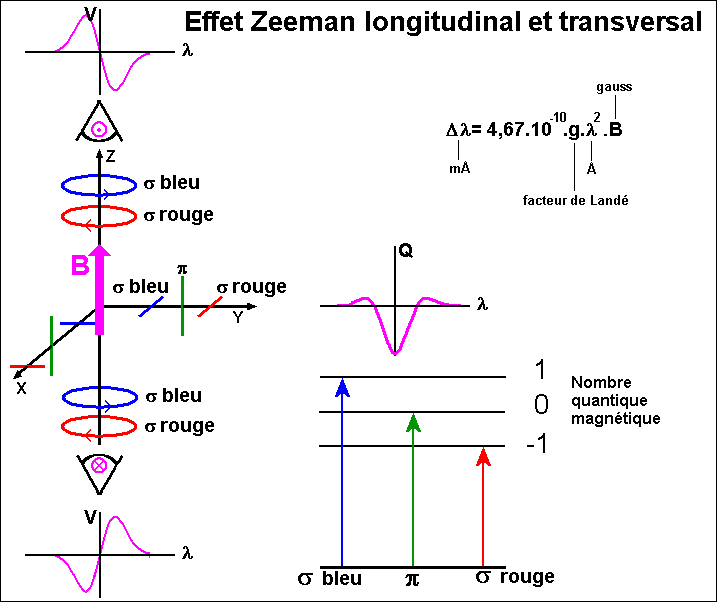 |
|
According to an article of Xavier Luri (2003-10-23) of Boletín18 of the SEA. |
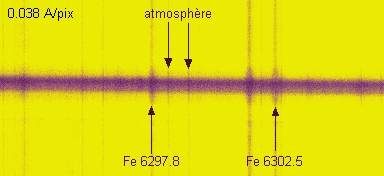 |
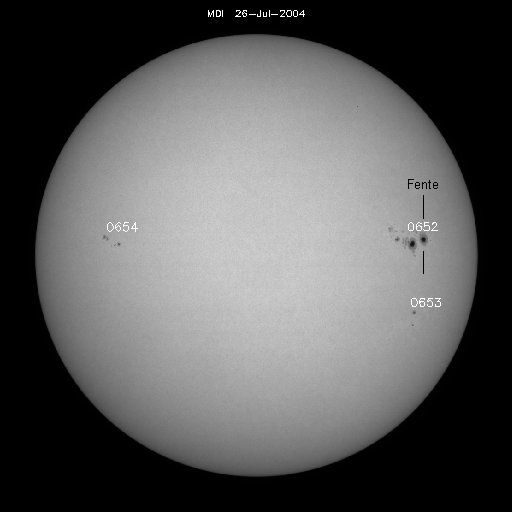 |
|
Above the solar spectrum obtained with the SHG around
the group of spots 0652 on 26 July 2004 as shown on the image
opposite.
|
|
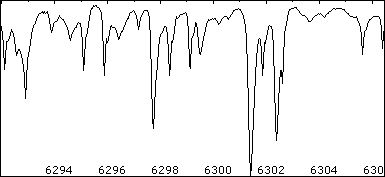 |
|
|
LE spectrum of the photospheric
area except spot.
|
Image SOHO of the Sun in the visible one.
|
| Preceding calculation gives, for the shift of +/- 3 pixels observed on the image with a dispersion of 0.038 Å/pixel, a magnetic field of approximately 2500 gauss. |
 |
|
Another example of a Zeeman effect.
|
 |
| Spot NOAA 0828 on November 19, 2005 and the spectrum of the cut indicated by the white feature which indicates the position of the slit of the SHG. |
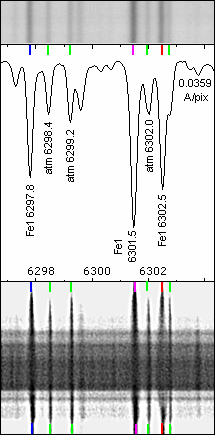 |
It is seen clearly that the atmospheric lines, marked in green, are not widened... of course. The lines of Fe1 do not completely offer the same aspect
either in the magnetic field of the shade and the half-light of the
spot. The variation of the two side branches at the border
shade-half-light is of 7 pixels approximately for the line Fe1 6302.5. |